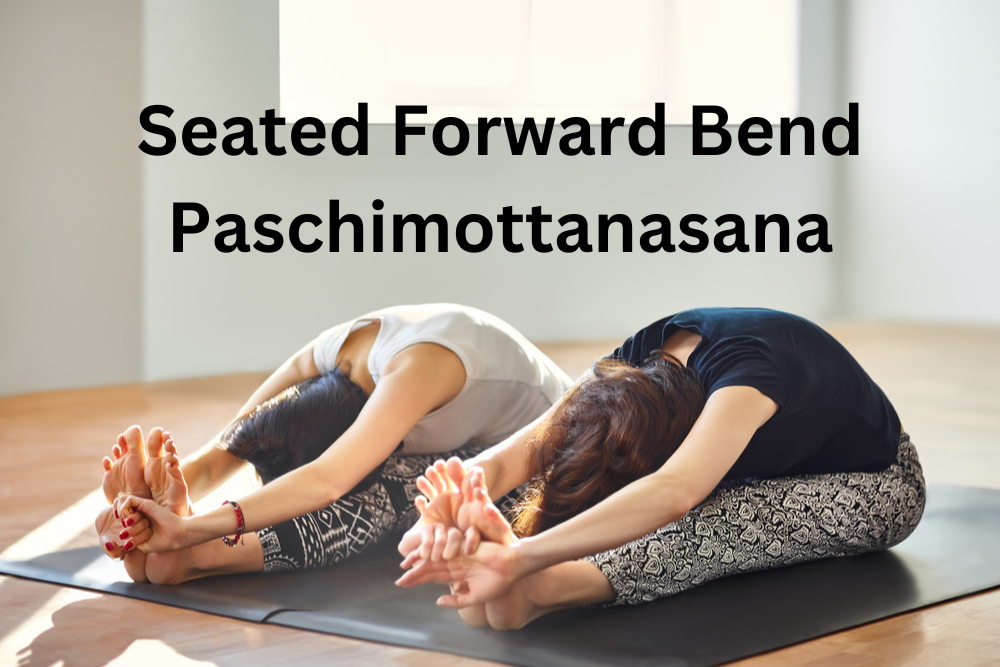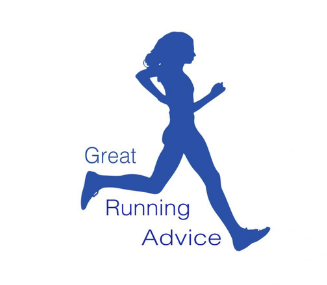Seated Forward Bend (Paschimottanasana) in Sanskrit is a popular yoga pose that benefits both beginners and experienced yogis and is also an excellent pose for runners. This pose stretches the back, legs, and hips while helping the mind. This article looks at the advantages of Paschimottanasana, the proper way to perform it, and some variations to consider.
Benefits of Seated Forward Bend (Paschimottanasana)

- Stretches the back and legs – Paschimottanasana provides a deep stretch to the entire backside of the body, from the neck to the heels. Therefore, this helps improve flexibility and decreases stiffness in the back, hamstrings, and calves.
- Improves digestion – By compressing the abdominal organs, this pose aids in digestion and enhances bowel movements. Therefore, it is beneficial for people with constipation or other digestive issues.
- Calms the mind – As a forward bend, Paschimottanasana is a soothing pose that helps reduce stress, anxiety, and fatigue. For that reason, it also improves mental focus and clarity.
- Strengthens the spine – This pose strengthens the muscles surrounding the spine, which improves posture and lowers the risk of back injuries.
- Stimulates the nervous system – Stretching the spine in this pose helps boost the nervous system, improving overall body function and reducing the effects of stress.
- Reduces menstrual discomfort – For women, this pose can help reduce menstrual cramps and decrease the pain associated with monthly cycles.
How to Perform Seated Forward Bend (Paschimottanasana) Correctly
- Sit with your legs straight in front of you – begin by sitting on the floor with your legs straight in front of you. Keep your spine tall and straight.
- Inhale and raise your arms overhead – take a deep breath in, and as you do so, raise your arms. Ensure your palms face each other and relax your shoulders.
- Exhale and fold forward – as you exhale, start folding forward from your hips, keeping your spine long and straight. Focus on touching your belly button to your thighs rather than rounding your back.
- Grab your feet or use a strap – grab the outer edges of your feet or wrap your index fingers around your big toes if possible. If you can’t reach your feet, use a yoga strap or towel around your feet to help deepen the stretch. Remember to maintain a straight back and relaxed shoulders.
- Inhale, lengthen, exhale, and deepen – as each inhale slightly lengthens your spine, creating space between your vertebrae. As you exhale, gently deepen the stretch, folding further forward. Hold this pose for 5 to 10 breaths.
- Inhale and release – to exit the pose, inhale and slowly lift your torso back up, releasing your hands from your feet. Exhale, and lower your arms back to your sides.
Tips for a Safe and Effective Paschimottanasana
- Focus on lengthening your spine- Keep your spine long and straight throughout the pose to prevent strain or injury. Avoid rounding your back and hunching your shoulders.
- Use props if needed – If you can’t reach your feet or have tight hamstrings, use a yoga strap or towel to help deepen the stretch.
- Listen to your body – Don’t push yourself too hard or force yourself into a deeper stretch than is comfortable. Listen to your body and back off if you experience pain or discomfort.
- Warm up before practicing -To avoid injury, warm up your body with gentle stretches or a few rounds of Sun Salutations before attempting Paschimottanasana.
- Be patient with your progress – Developing flexibility takes time, so be patient with yourself as you work on this pose. Over time, you will likely find that you can fold deeper and more comfortably into the pose.
Variations of Seated Forward Bend (Paschimottanasana)
- Half-Seated Forward Bend (Ardha Paschimottanasana) – Try this variation if you have tight hamstrings or are new to yoga. Bend one leg and bring the sole of your foot to the inside of your opposite thigh. Fold forward over your extended leg, following the same steps as the full pose.
- Head-to-Knee Pose (Janu Sirsasana) – Another variation for those with tight hamstrings involves bending one leg and placing the sole of your foot against your inner thigh, similar to Half Seated Forward Bend. However, in this pose, you will rotate your torso slightly to align your chest with your extended leg and then fold forward.
- Seated Forward Bend with a Bolster – Place a bolster or folded blanket on your thighs to make the pose easier. As you fold forward, rest your forehead on the bolster, allowing your body to relax and release tension.
Conclusion
Seated Forward Bend (Paschimottanasana) is a simple yet powerful yoga pose with many physical and mental benefits. Practicing this pose regularly can improve your flexibility, digestion, and mental health while reducing stress and tension. Remember to listen to your body, always use props if needed, and be patient with your progress, as everybody’s bodies differ. Over time and with consistent practice, you will reap the rewards of this calming pose.
